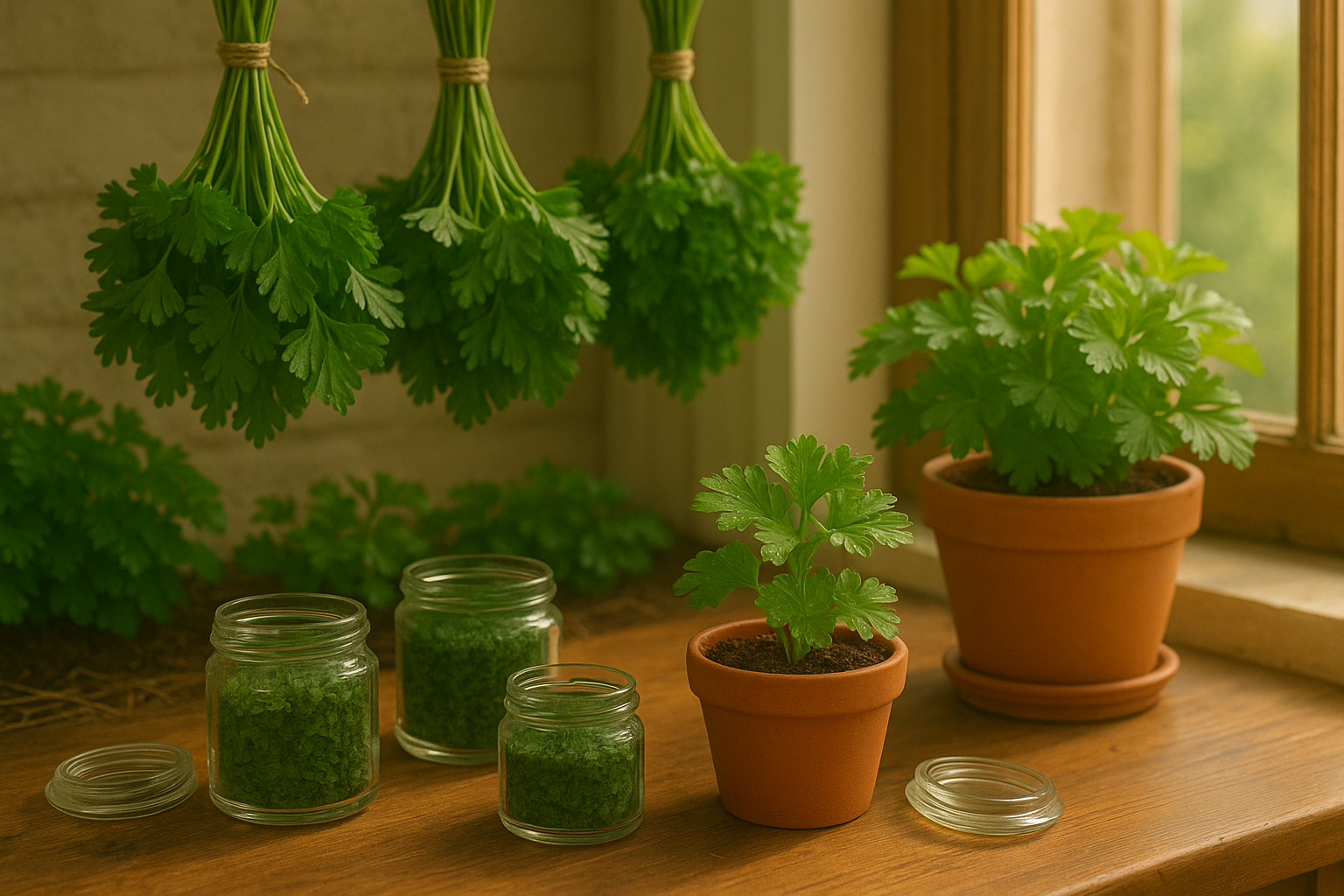Why Dry Parsley at Home?
Drying parsley at home offers a bunch of benefits that make it a smart choice for any home cook. First, you get to lock in that fresh, vibrant flavor right from your own kitchen—something often lost in store-bought options that have sat on shelves for months. Freshly harvested parsley from your garden or a grocery store bunch can go limp and lose its punch quickly, but drying lets you preserve that bright, herby taste so you can enjoy it all year long.
Not only does this save you money—since you don’t have to toss unused parsley or buy expensive prepackaged jars—but it also helps reduce food waste, making your cooking habits more sustainable. Home-dried parsley is free from preservatives and additives that many commercial brands sneak in to extend shelf life. Plus, herbs dried soon after picking typically retain more nutrients compared to off-the-shelf versions that have degraded over time.
Once you have your own stash of dried parsley, it’s easy to sneak it into all kinds of dishes: sprinkle it over soups and salads for a fresh boost, add depth to pasta sauces, or use it as a garnish for roasted veggies and meats. The convenience and versatility of having your own jar of dried parsley on hand can completely transform the way you season everyday meals.
Choosing and Prepping Parsley for Drying
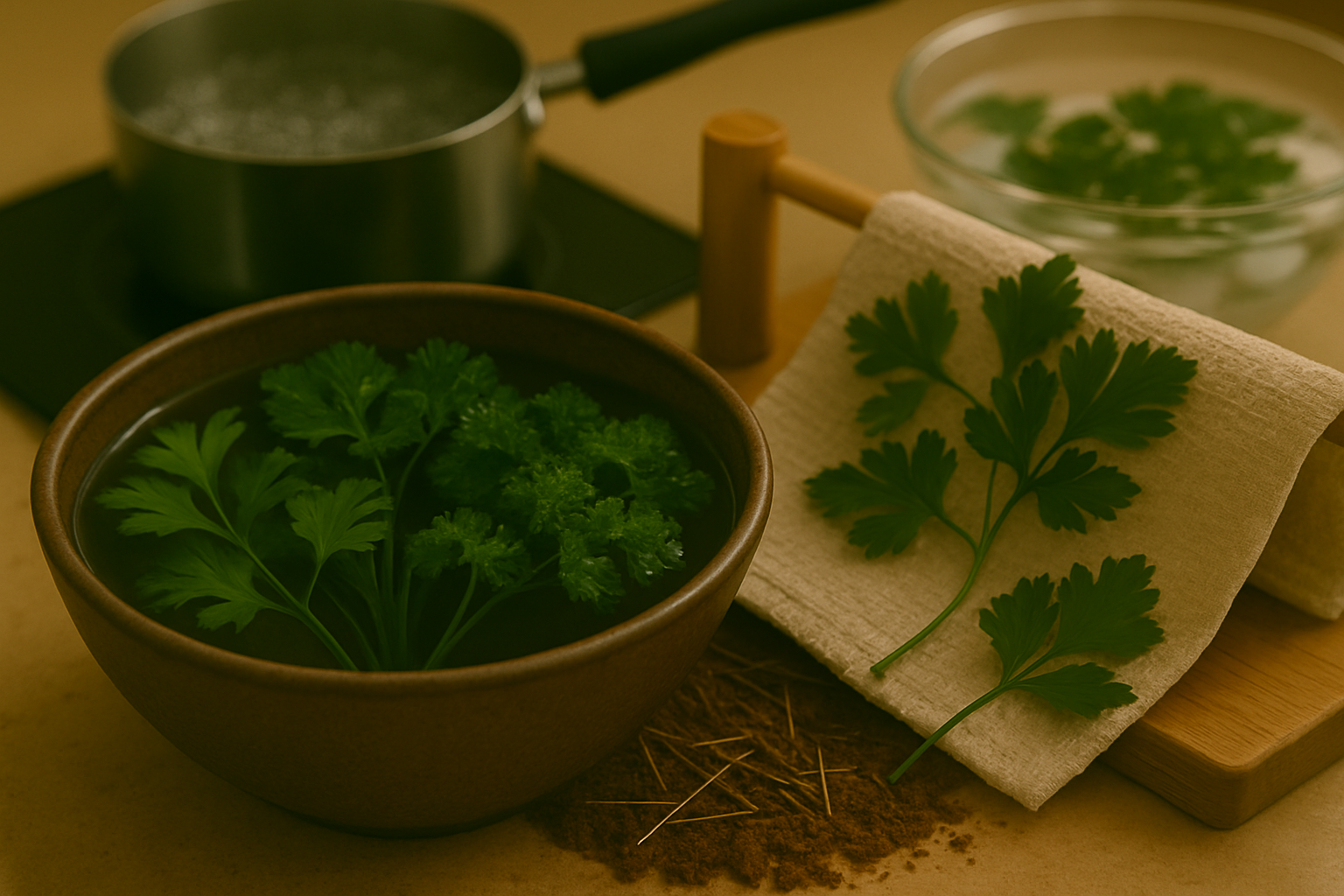
When choosing parsley for drying, start by selecting the freshest bunches you can find—look for vibrant, deep green leaves without yellowing or wilting, as these indicate peak flavor. There are two main types of parsley: flat-leaf (Italian) and curly. Flat-leaf parsley boasts a bolder, more robust flavor, making it the top pick for those who want noticeable taste in dried herbs, while curly parsley has a milder profile and a more delicate texture, which some prefer for garnishing.
Whichever type you choose, begin by filling a bowl with cool water and gently swishing the leaves to loosen dirt and grit; repeat this if needed until the water runs clear. Spread the parsley on a clean kitchen towel or use a salad spinner to thoroughly dry the leaves—excess water can lead to brittle or moldy dried herbs.
Next, strip the leaves from the tough stems, as the stems can turn woody and lose flavor after drying. If you want to preserve the parsley’s vivid green color and boost its taste, consider blanching: briefly dip clean parsley in boiling water for 15 seconds, then plunge it into ice water before drying with towels. This extra step helps lock in both color and flavor, ensuring your dried parsley looks and tastes like it’s fresh from the garden.
Whether air-drying, oven-drying, or using a dehydrator, starting with clean, dry, stem-free parsley sets the stage for preserving the best qualities of this versatile herb.
Top Methods to Dry Parsley (Step-by-Step)
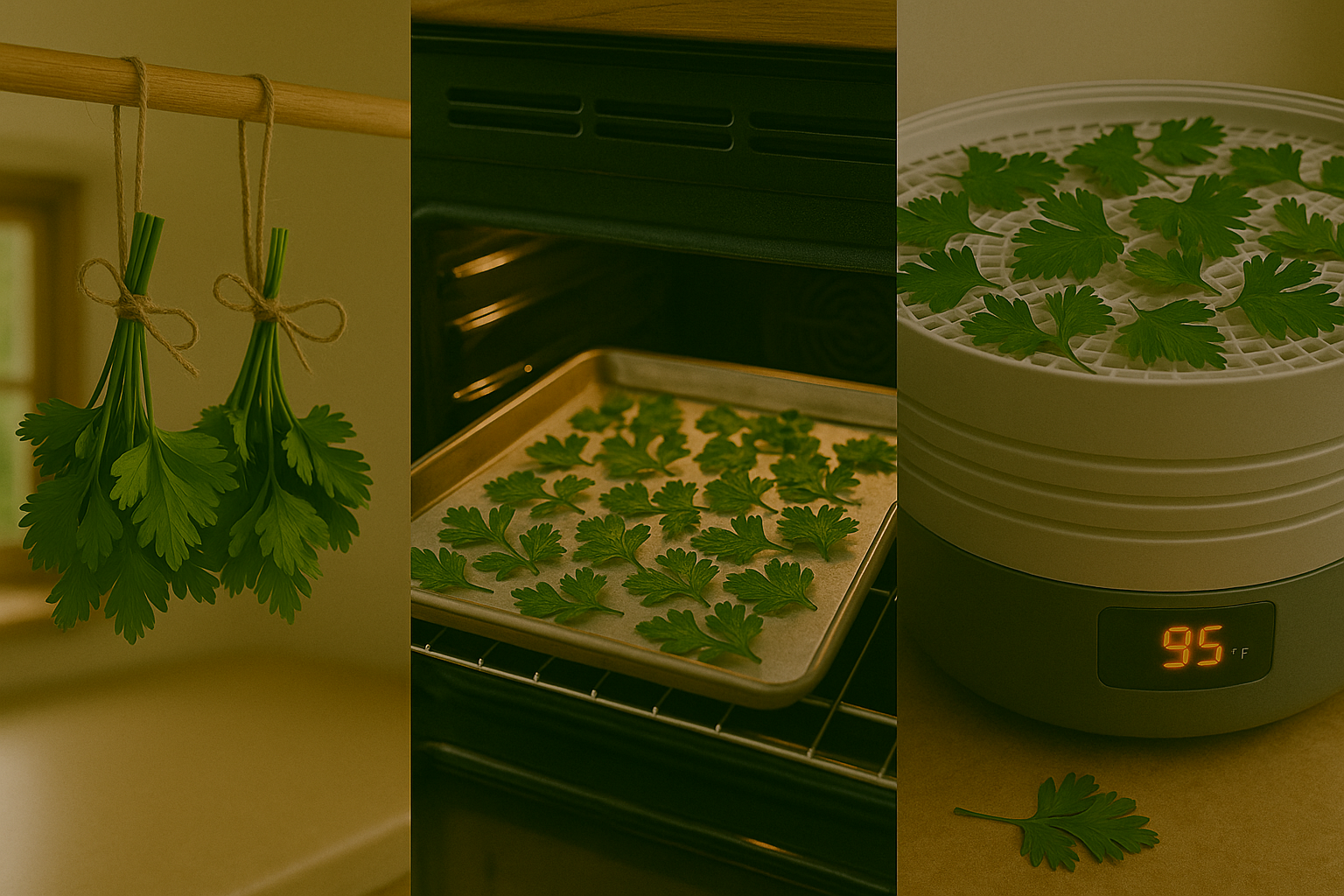
Drying parsley at home is simple and allows you to keep fresh flavor on hand all year. The three main methods are air drying, oven drying, and using a food dehydrator.
Air Drying
Air drying is the most traditional and energy-efficient option. Start by washing and gently patting parsley dry, then tie small bunches with string and hang them upside down in a warm, ventilated space away from direct sunlight. Wait about 1–2 weeks, checking regularly; the parsley is ready once the leaves crumble easily between your fingers.
- Pros: No special equipment, preserves flavor well.
- Cons: Slow, not ideal in humid climates.
Oven Drying
Oven drying speeds things up: lay washed parsley leaves in a single layer on a baking sheet, and bake at the lowest heat (around 170°F or 75°C) for 20–30 minutes. Start checking every 5 minutes after 20 minutes until the leaves are dry and crisp.
- Pros: Quick and works even in humid areas.
- Cons: Risk of burning, flavor loss if overheated.
Using a Food Dehydrator
Dehydrators offer the most control—spread washed leaves on dehydrator trays in a single layer, set the temperature to 95–115°F (35–46°C), and let dry for 1–4 hours. Check for crisp, crumbly leaves.
- Pros: Fast, reliable, minimal flavor loss.
- Cons: Requires special equipment.
Final Checks and Storage
Fully dried parsley should be crisp and crumble easily with no signs of moisture. Test a few stems to confirm. For the best results, choose the method that fits your needs: air drying is great if you have patience and dry weather, oven drying suits those who want speed and only have basic kitchen tools, while dehydrators are perfect for frequent herb drying or larger harvests.
No matter your choice, store dried parsley in airtight containers away from light to lock in freshness.
Storing and Using Your Dried Parsley
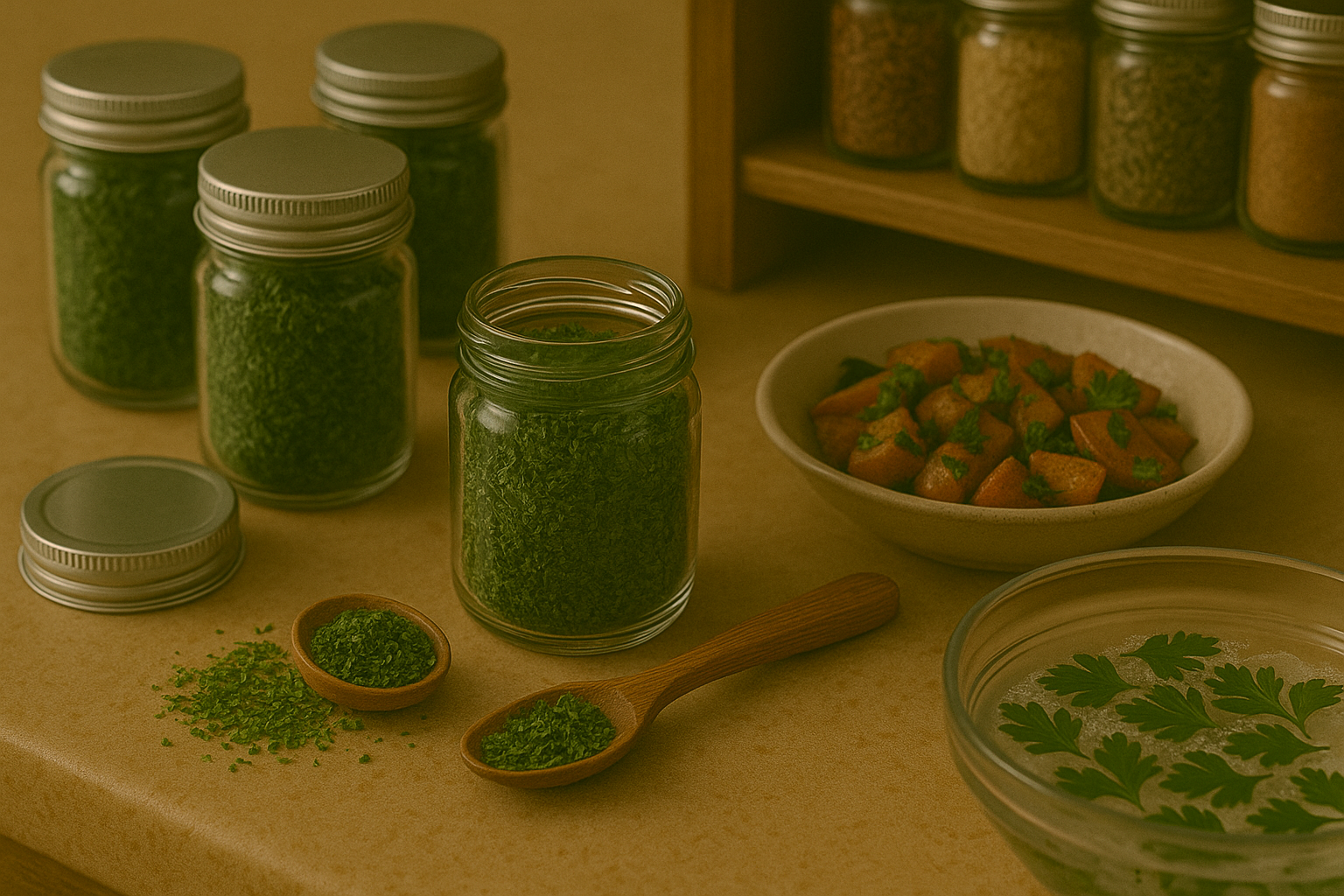
To keep your dried parsley as fresh and flavorful as possible, store it in a clean, airtight container such as a glass jar with a screw-top lid or a BPA-free plastic container with a tight seal. Avoid flimsy bags or cardboard containers, as these let in air and moisture that quickly degrade the herbs.
Place the container in a cool, dark spot—like a pantry or cupboard away from your stove and sunlight—which helps preserve the vibrant green color and scent. Ideally, dried parsley will stay fresh for six to twelve months.
To check if it’s still good, crush a small amount in your hand; if it releases a strong, herby fragrance and retains some of its green color, you’re set. If it smells dull or looks faded and crumbly, it’s likely time to refresh your supply.
Dried parsley is a versatile ingredient you’ll want within arm’s reach. Use it to sprinkle over soups, stews, or roasted veggies for a burst of color and mild flavor. Mix it into salad dressings, marinades, and egg dishes, or blend it with breadcrumbs and grated cheese as a topping for casseroles and baked chicken.
It’s also great for finishing pasta dishes—just toss a teaspoon into hot noodles with olive oil and garlic to brighten things up. With careful storage and a little creativity, your homemade dried parsley can become an everyday staple in your kitchen.
Troubleshooting & Pro Tips for Drying Parsley
Drying parsley at home can sometimes lead to a few common issues, but with a little know-how, you’ll get the best results every time.
Discoloration—like yellowing or browning—usually happens when parsley dries too slowly or is exposed to too much sunlight. To prevent this, spread the parsley in a single, thin layer and dry it in a cool, well-ventilated space. Alternatively, you can use an oven at the lowest possible setting with the door cracked open.
Mold is another frequent problem, especially with large, crowded batches. Always wash and thoroughly pat the leaves dry before drying, and avoid piling too many stems together. Smaller batches allow for better air circulation, which helps prevent mold.
To preserve parsley’s flavor and avoid a bland end product, dry the leaves quickly but gently. Once they’re crisp, store them in airtight containers away from light and heat.
If your dried parsley crumbles too much during storage, try laying whole leaves between paper towels and pressing gently with a book instead of crushing them outright. This keeps the pieces larger and easier to handle.
Enhance both nutrition and flavor by pairing dried parsley with herbs like basil or dill in mixes. For even better results, rehydrate dried parsley before adding it to dishes by soaking it in a bit of warm water—this helps revive its bright green color and aroma.
With these practical tips, you’ll consistently get vibrant, tasty, and long-lasting dried parsley for your kitchen.
Creative Ideas for Using Dried Parsley
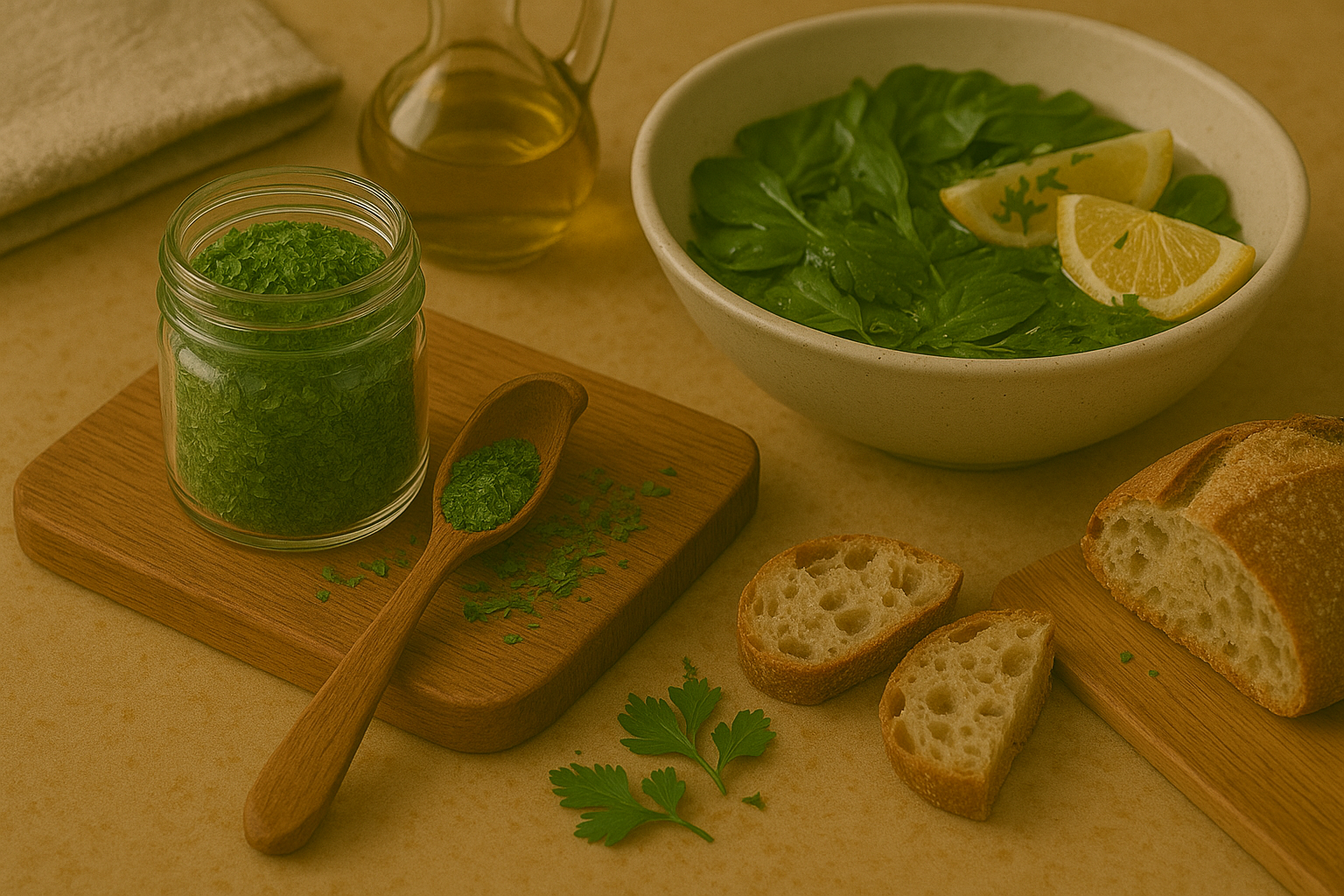
Dried parsley is a versatile herb that does much more than just garnish soups or stews. Try blending it with other dried herbs like basil, oregano, and thyme to create your own custom Italian seasoning—perfect for sprinkling on pizza or mixing into marinades.
For a burst of fresh flavor, whisk together olive oil, lemon juice, garlic, and a generous pinch of dried parsley to make a zesty salad dressing or a quick dip for crusty bread.
Dried parsley also works wonders as a finishing touch for roasted vegetables or baked potatoes; simply toss it in at the end of cooking to add a splash of color and a mild, earthy flavor.
Get Crafty with Dried Parsley
- Combine dried parsley with sea salt, cracked pepper, and chili flakes to make an herbed salt blend. Packaged in a small jar, this DIY blend makes a thoughtful and practical homemade gift.
- Create your own spice jars or herb sachets, add a handmade label, and pair them with recipe cards for foodie friends.
Don’t be afraid to experiment: stir dried parsley into scrambled eggs, sprinkle it over popcorn for an herbal twist, or mix it with breadcrumbs to coat chicken or fish. Its mild taste won’t overpower other flavors, making it a great way to boost nutrition and color in meals you already love.
Keep a small container within reach and let dried parsley inspire a little everyday creativity in your kitchen.
